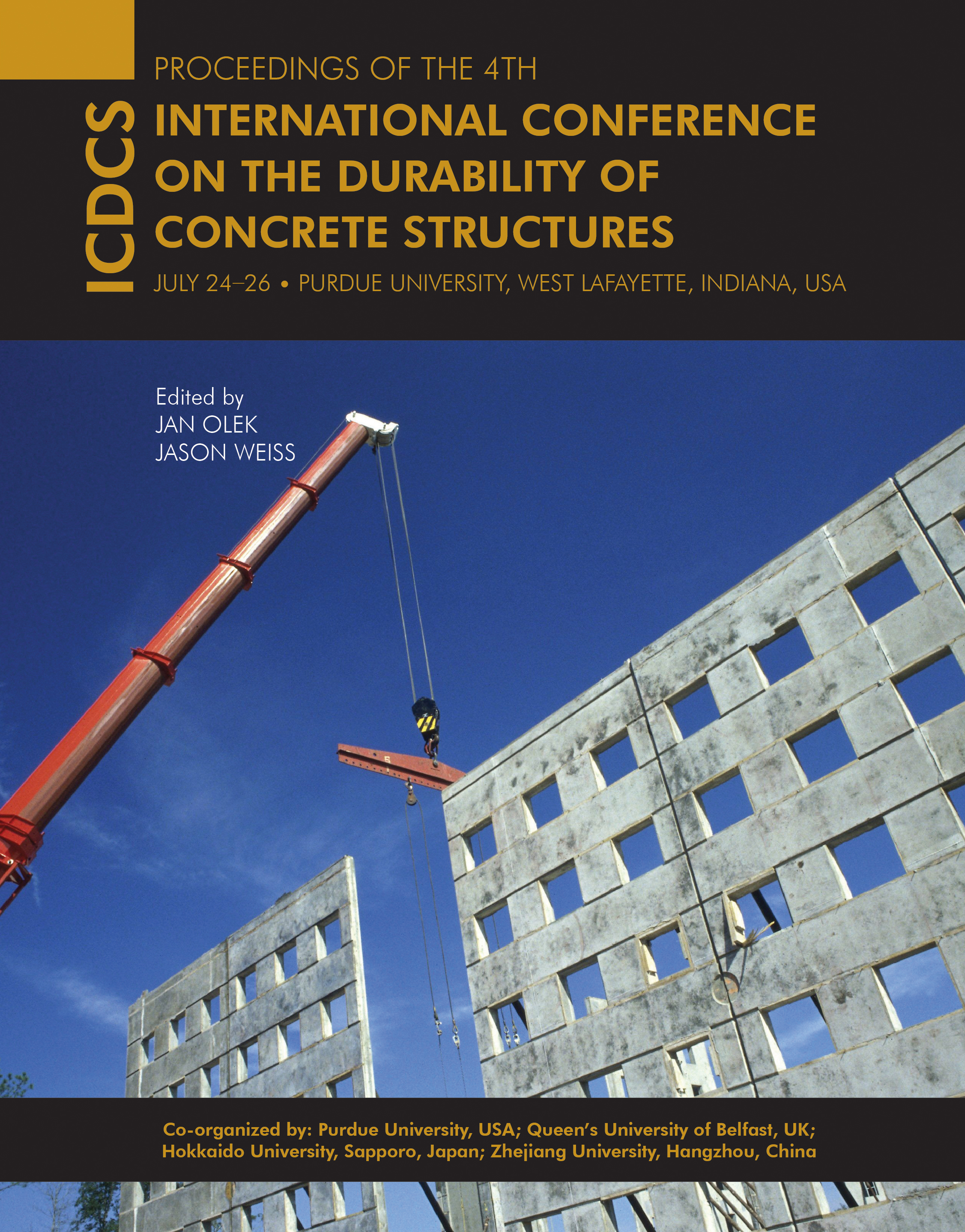Abstract
Three concrete mix proportions were designed and prepared, respectively, such as fly ash concrete (abbreviated as “FAC”) with 30% fly ash replacement ratio of cement, fly ash, and slag concrete (abbreviated as “FSC”) with each of 20% fly ash and slag replacement ratio and ordinary Portland cement concrete (abbreviated as “OPC”) for the research of carbonation and chloride resistance of concrete under different initial hot water curing. Specimens with precuring were put into 20°C water tank for curing firstly until a certain compressive strength of 14 MPa reached after demolding, while specimens without precuring were put into 40, 60, and 80°C water tanks for curing directly just after demolding. Hot water curing of each specimen was finished when the designed compressive strength of 35 MPa was reached, then specimens were taken out into indoor natural environment. High concentration CO2 carbonation and Coulomb electric flux experiments were carried out at specimens’ 100-day age. Results show that with the addition of fly ash or slag, the carbonation resistance of concrete declines, whereas the resistance to chlorides is improved. With the increasing of initial water-curing temperature from 40 to 80°C, the carbonation and chloride resistance of OPC concrete all decrease, whereas for FAC and FSC concretes, the carbonation resistance declines and chloride resistance goes up. Precuring at the normal temperature before the elevated temperature water curing is beneficial for concrete long-term carbonation and chloride resistance.
DOI
10.5703/1288284315383
Included in
Concrete Carbonation and Chloride Resistance Under Initial Hot Water Curing
Three concrete mix proportions were designed and prepared, respectively, such as fly ash concrete (abbreviated as “FAC”) with 30% fly ash replacement ratio of cement, fly ash, and slag concrete (abbreviated as “FSC”) with each of 20% fly ash and slag replacement ratio and ordinary Portland cement concrete (abbreviated as “OPC”) for the research of carbonation and chloride resistance of concrete under different initial hot water curing. Specimens with precuring were put into 20°C water tank for curing firstly until a certain compressive strength of 14 MPa reached after demolding, while specimens without precuring were put into 40, 60, and 80°C water tanks for curing directly just after demolding. Hot water curing of each specimen was finished when the designed compressive strength of 35 MPa was reached, then specimens were taken out into indoor natural environment. High concentration CO2 carbonation and Coulomb electric flux experiments were carried out at specimens’ 100-day age. Results show that with the addition of fly ash or slag, the carbonation resistance of concrete declines, whereas the resistance to chlorides is improved. With the increasing of initial water-curing temperature from 40 to 80°C, the carbonation and chloride resistance of OPC concrete all decrease, whereas for FAC and FSC concretes, the carbonation resistance declines and chloride resistance goes up. Precuring at the normal temperature before the elevated temperature water curing is beneficial for concrete long-term carbonation and chloride resistance.





